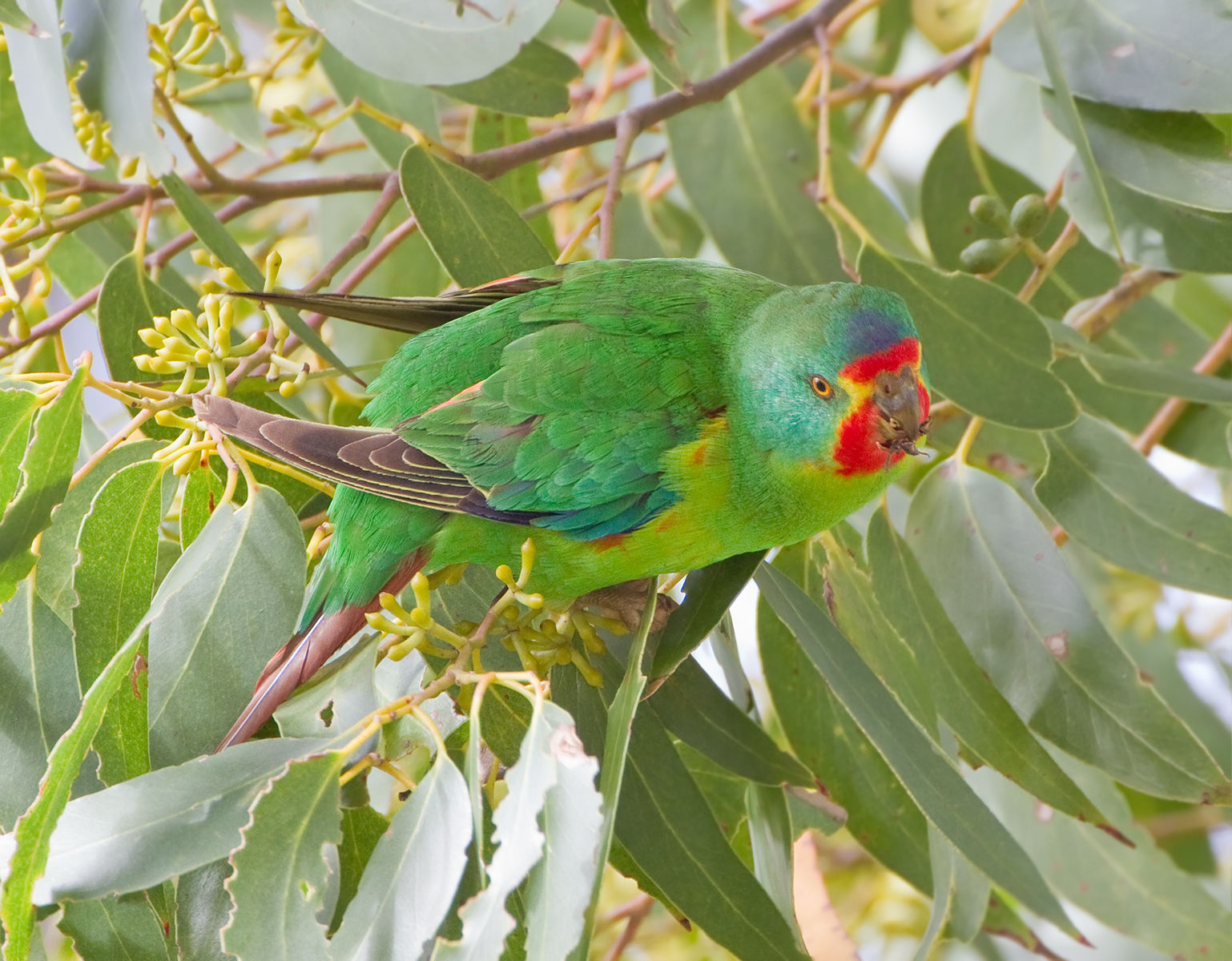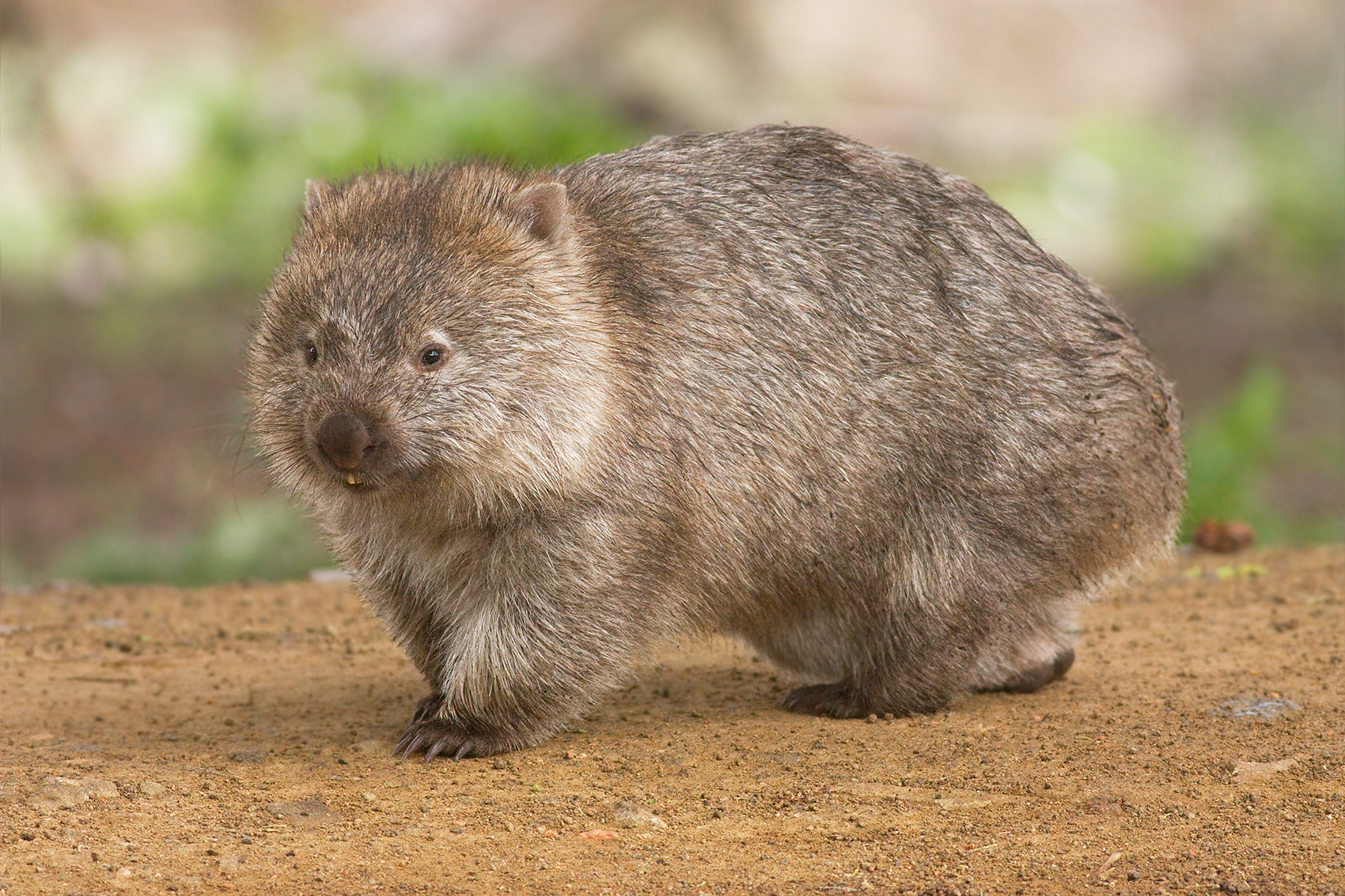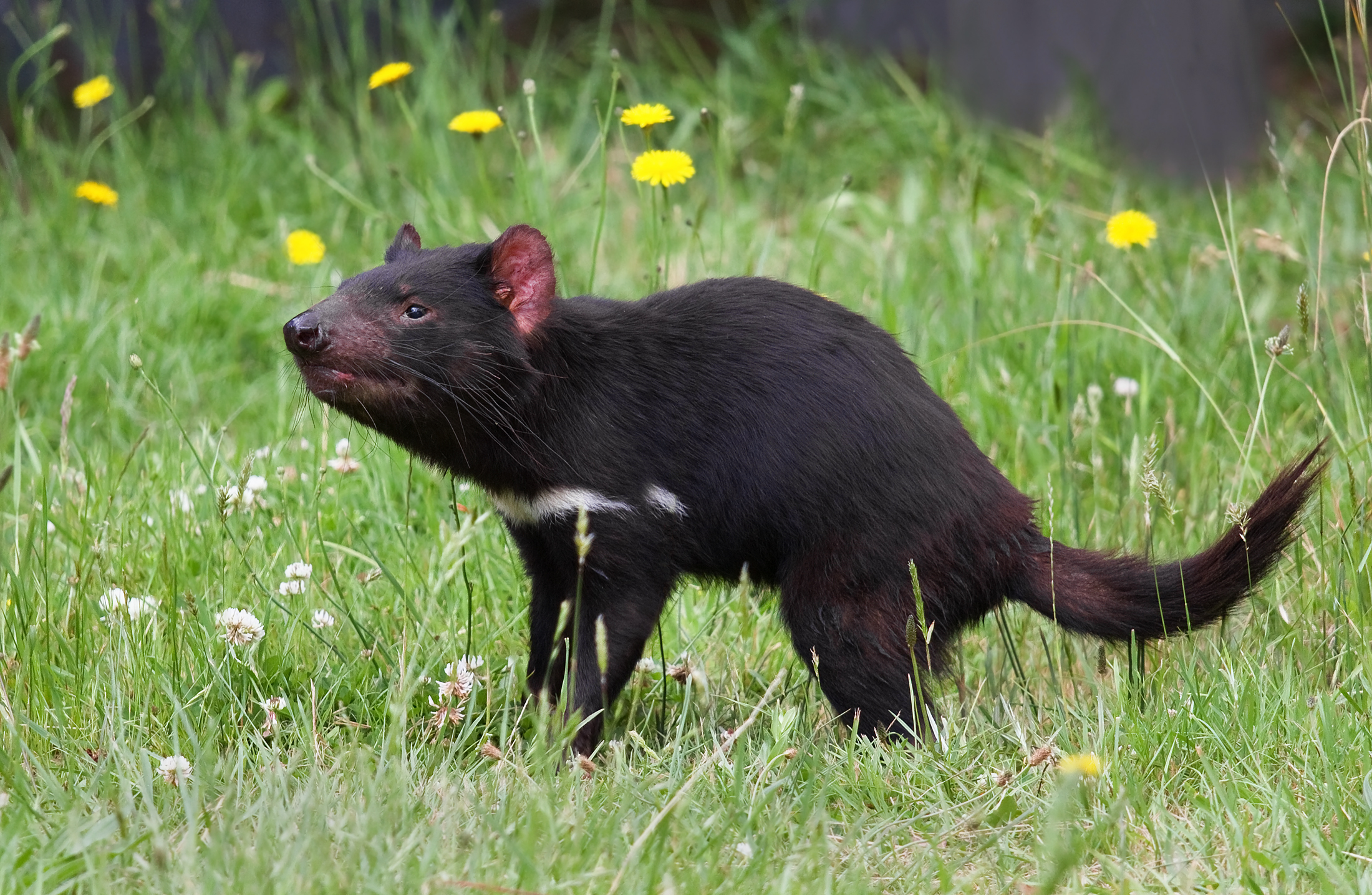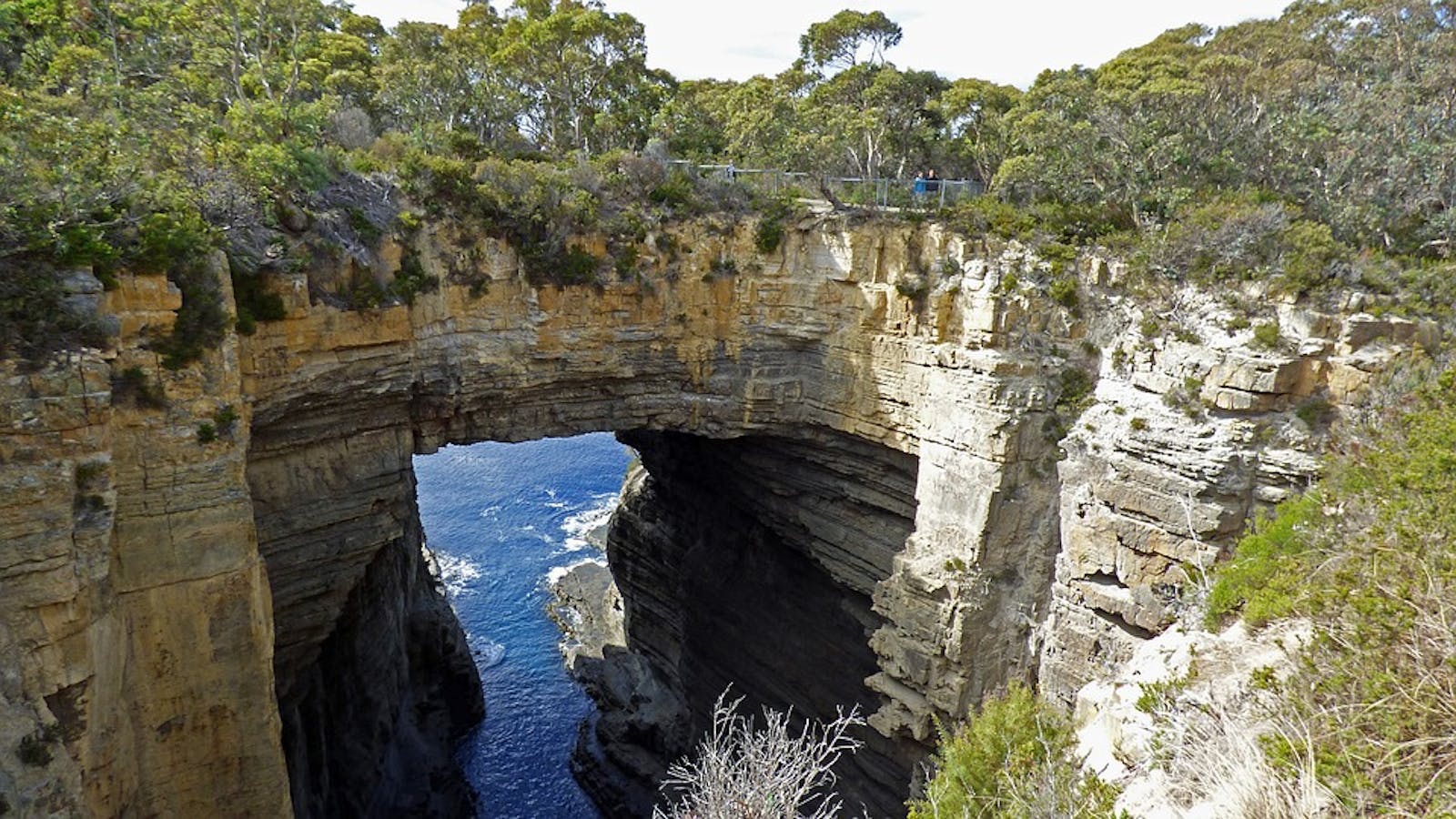Tasmanian Temperate Forests
The ecoregion’s land area is provided in units of 1,000 hectares. The conservation target is the Global Safety Net (GSN1) area for the given ecoregion. The protection level indicates the percentage of the GSN goal that is currently protected on a scale of 0-10. N/A means data is not available at this time.
Bioregion: East Australian Temperate Forests & Mountain Shrublands (AU3)
Realm: Australasia
Ecoregion Size (1000 ha):
2,329
Ecoregion ID:
178
Conservation Target:
61%
Protection Level:
3
States: Australia
Eastern Tasmania’s drier eucalypt forests are more similar to those of Southeast mainland Australia than they are to the island’s western rainforests. Eucalypt woodlands, wombats, wallaby, kangaroo, echidnas, and platypus are shared with the mainland. Tasmanian devils, though, survive only in Tasmania in the absence of dingos. Tasmanian thylacines once hunted in these open woodlands with grassy and shrub understories maintained by Aboriginal fire-stick burning.

The flagship species of the Tasmanian Temperate Forests ecoregion is the swift parrot. Image credit: JJ Harrison, Creative Commons
The ecoregion’s drier sclerophyll forest is commonly dominated by peppermint eucalypts (Monocalyptus) with diverse understories of drier habitat species, such as Acacia, Allocasuarina, and Exocarpos species. Eucalyptus amygalina, E. pulchella, and E. viminalis are among the 26 species (out of 29 on the island) that occur in this driest part of Tasmania. Allocasuarina and Callitris species can form dry woodlands along the coast. Callitris rhomboidea may grow to 30 m in fire-protected sites. The upper slopes of the highlands of Ben Lomond support wetter eucalypt forest, rainforest, and some heathlands and alpine vegetation. Eucalyptus globulus, E. brookeriana, and E. regnans prefer wetter sclerophyll forests. Tussock grasslands (Poa poiformis) occur in disturbed landscapes and offshore islands.

Tasmanian bettong. Image credit: JJ Harrison, Creative Commons
The ecoregion has been burned repeatedly by Tasmanian Aborigines for the last 12,000 years, creating open grassland savanna and fire-adapted vegetation. After Europeans arrived and fire-setting diminished, grassy woodlands shifted to shrubby forests over time. The Bass Strait and King islands had dry sclerophyll woodland, wet sclerophyll forest, heath formations, and some rainforest elements. Wilson’s Promontory in the southeast corner of mainland Australia supports a disjunct portion of this ecoregion, along with the Furneaux Group of islands.

Wombat. Image credit: JJ Harrison, Creative Commons
Larger mammalian herbivores include the red-necked wallaby (Macropus rufogriseus), eastern grey kangaroo (Macropus giganteus), and wombats (Vombatus ursinus tasmaniensis). Short-beaked echinda (Tachyglossus aculeatus), platypus (Ornithorhynchus anatimus), long-nosed potoroo (Potorous tridactylus), and the eastern barred bandicoot (Perameles gunnii) of grasslands are also shared with mainland faunas. Tasmanian bettong (Bettongia gaimardi) and little pygmy possum (Cercartetus lepidus) prefer drier forests. Spotted-tail quoll (Dasyurus maculatus) and eastern quoll (D. viverrinus) are resident. Flinders Island has a subspecies of wombat (V. U. Ursinus).

Duckbilled platypus. Image credit: Stefan Heinrich, Creative Commons
Over 245 species of bird are recorded. The swift parrot (Lathamus discolor) and the forty-spotted pardalote (Pardalotus quadragintus) are largely endemic to the ecoregion. The King Island emu (Dromaius ater) and the Tasmanian subspecies of emu, D. novaehollandiae diemenensis are both extinct. The Tasmanian native hen (Gallinula mortierii), black-headed honeyeater (Melithreptus affinis), and yellow wattlebird (Anthochaera paradoxa) are near-endemics. The green rosella (Platycercus caledonicus), brown scrubwren (Sericornis humilis), and yellow-throated honeyeater (Lichenostomus flavicollis) are distinct to Tasmania. Rawlinson's window-eyed skink (Pseudemoia rawlinsoni) is endemic to the ecoregion. Nine other lizards occur, including the mountain dragon (Tympanocryptis diemensis). The Tasmanian treefrog (Litoria burrowsi) and the Tasmanian froglet (Crinia tasmaniensis) are ecoregion endemics.

Wild shortbeak echidna. Image credit: Creative Commons
Over 40% of dry sclerophyll vegetation has been lost to clearing for agriculture and forestry. Overgrazing impacts vegetation. Lack of regular, low intensity fires has caused the transition of some open habitats types towards shrubby woodlands. The swift parrot appears to be dependent on recently burned habitats for foraging. Allocasuarina and Callitris woodlands, however, are damaged by high fire frequency. The loss of older trees through forestry operations limits tree holes used by parrots and other wildlife. Invasive species harm wildlife and habitats. Aggressive non-native species include foxes, feral cats, feral pigs, feral dogs, rabbits, Indian mynah, and rainbow lorikeets.

Tasmanian devil. Image credit: JJ Harrison, Creative Commons
Key conservation areas in this ecoregion include the Douglas-Aspley, Strezlecki, Wellington Park Conservation Area, Wielangta region, Ben Lomond, and Freycinet National Parks. The key conservation actions for the next decade are to: 1) reintroduce regular, low-intensity wildland burns in some habitats to provide forage for swift parrots; 2) strengthen protection of grassy E. viminalis woodland used by the endangered forty-spotted pardalote; and 3) strengthen protections of late-seral stage forest and rare habitat types on privately-owned lands, including within forestry concessions.
Citations
- Australian Government. 2015. Conservation Management Zones of Australia – Tasman Temperate Forests. Department of the Environment. Available at: http://www.environment.gov.au/system/files/resources/4aab0b8e-1697-4342-83be-7f98023525ff/files/cmz-tasman-temperate-forests.pdf
- Duncan, F. 1999. Dry Sclerophyll Forests and Woodlands. Pages 244-264 in J.B. Reid, R. S. Hill, M. J. Brown, and M. J. Hovendon, editors. Vegetation of Tasmania. Flora of Australia Supplementary Series. No. 8. Australian Biological Resources Study, Environment Australia, Canberra.
- Brown, M. J. and F. D. Podger. 1999. Conservation of Tasmania’s Natural Vegetation. Pages 381 – 400 in J.B. Reid, R. S. Hill, M. J. Brown, and M. J. Hovendon, editors. Vegatation of Tasmania. Flora of Australia Supplementary Series. No. 8. Australian Biological Resources Study, Environment Australia, Canberra.



